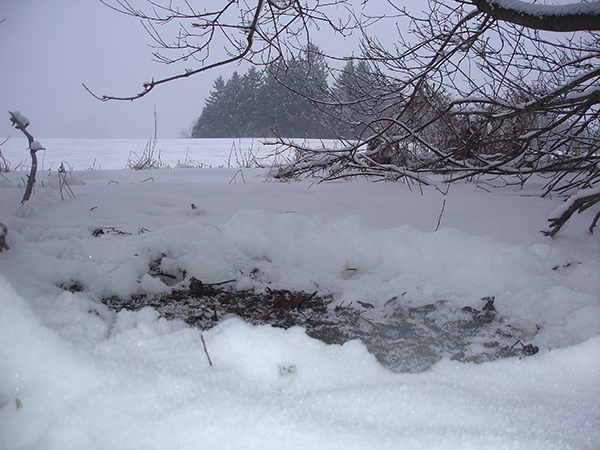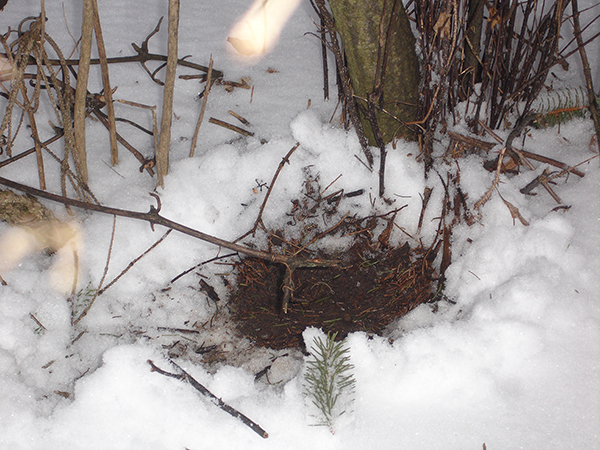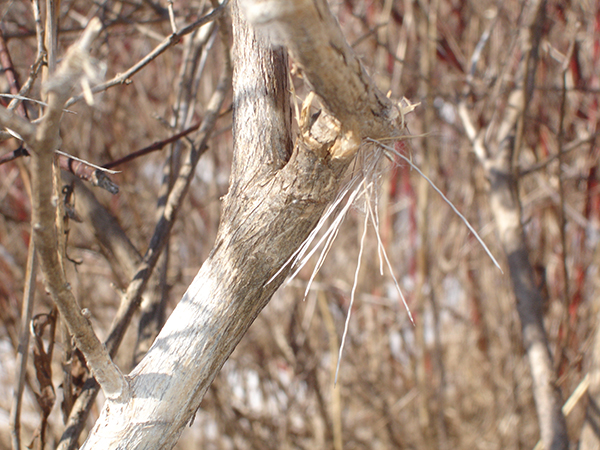Fencerows: A Simple Morning Walk
By John Luthens
Aldo Leopold was a teacher and a conservationist. His cutting-edge philosophy and essays on wildlife management, developed in large part from his humble farm near Baraboo, Wisconsin, are standard-issue reading and standard-issue quoting for outdoor enthusiasts around the world.
Deep thinkers like Leopold tend to plop me into a pool that crests far above the waterline of my mental waders, but the core of his teaching, the way I understand it, is that everything has to get along and live together on the same planet. We humans simply need to enjoy the beauty, learn from our wrong turns, try not to stomp on all the flowers or kill every animal in sight while getting back on course, and continue to move steadily along the trail.
My favorite Leopold essay is not a profound statement on ecological balance. Rather, it is a simple record of a spring-thaw morning on his farmland, which he spends following the winding tracks of a skunk in the snow. Leopold feels the pull of warming weather and goes for a walk to see what’s shaking.
While I can’t claim a full grasp of the deeper science and philosophy behind Leopold’s writing, I do know what a skunk looks like. I also happen to have a neighboring farmer who owns 80 acres of corn and hay fields that are shot through with a just the right mix of pine forest, alder swamp, and grape-tangle hedgerows.
When it snowed overnight last week (hopefully for the last time this spring), I made plans to set out the next morning into the wilds of my neighbor’s field land. It was not so much for the sake of knowledge, and not to stumble across a recently un-hibernated skunk, but more in the spirit of curiosity. Mostly, I just went out for a simple morning walk. I’d like to think Aldo Leopold would have appreciated the setting.
I crunched through my backyard and worked the edge of the field along a gully of fallen elm and twisted brush. The snow was easing up and the temperature was climbing. Clumps of heavy and wet snow fell on my head as I crawled over decades of field rocks and fallen limbs. I found the first signs of life in a patch of matted grass.

An early morning deer bed.
I set out to follow the deer. Snow was dusted off fallen logs where they’d jumped over. I quickly got distracted. I came across a rabbit track with the distinct prints of a coyote in pursuit. This was even better; blood and gore, predator versus prey. I veered off the deer trail and followed to find the outcome of the chase.
The rabbit bounded into the open field, going a good 2 feet on every hop. The coyote followed close behind, until the rabbit finally swung back towards the subdivision yards on my street. The coyote must have lost interest or shied away from the yard lights, turning back and padding across the field. No rabbit soup for you! I moved on.
I ducked into a tall grove of Norway pines along the back of the farm. Red squirrel tracks dusted between the tree trunks; down one tree, a quick scurry of feet and a bit of pawed-up ground to dig for an unseen stash, and then back up another tree. I was intent on the squirrels when I caught a flash of gray behind me. Another cottontail sailed to safety.

The recently-vacated den of a cottontail rabbit.
A stubble cornfield ran along the edge of the trees. I searched the rabbit’s back-trail to see if it had come from the open. The hungry coyote should have followed me. I found the rabbit’s den at the base of a pine on the field edge. The small depression was warm and moist. I’d walked within 10 feet of the bunny without seeing it before it bolted. Perhaps the coyote would have been more perceptive.
The sun broke ragged through the passing snow clouds. A pair of sandhill cranes swooped and called over my head as I entered a wetland swamp. I’ve heard these birds many times. It never gets old. It is a cry of something ancient. I picked up another fresh deer trail and followed it into the alders and marsh grass.
New water and mud splattered on the snow where the deer had come through. It was a large track, and I kept my eyes peeled off to the sides, hoping to see the fallen shed of a buck. The animal trekked deeper and my boots became soaked in short order. When I heard the start of the morning town traffic in the distance, I gave up the trail and headed for home.

A tuft of hair marks a passing deer.
Aldo Leopold wrote, “There are some who can live without wild things, and some who cannot.”
I never got a glimpse of the last deer I followed, but I found a pulled tuft of hair stuck to a twig that the silent animal had snapped going through the brush. The strands were very small. It was only a simple morning walk. But I knew in a moment of clarity what Aldo was talking about. I considered it a major victory.
John Luthens is a freelance writer from Grafton, Wisconsin. His first novel, Taconite Creek, is available on Amazon or at www.cablepublishing.com or by contacting the author at Luthens@hotmail.com









